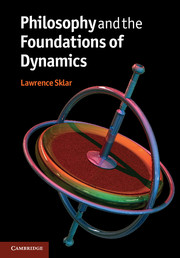Book contents
- Frontmatter
- Contents
- Chapter 1 Introduction
- Chapter 2 The pre-history of classical dynamics
- Chapter 3 The astronomical revolution
- Chapter 4 Precursors to Newtonian dynamics
- Chapter 5 The Newtonian synthesis
- Chapter 6 Philosophical aspects of the Newtonian synthesis
- Chapter 7 The history of statics
- Chapter 8 The development of dynamics after Newton
- Chapter 9 The “Newtonian” approach after Newton
- Chapter 10 From virtual work to Lagrange's equation
- Chapter 11 Extremal principles
- Chapter 12 Some philosophical reflections on explanation and theory
- Chapter 13 Conservation principles
- Chapter 14 Hamilton's equations
- Chapter 15 Canonical transformations, optical analogies and algebraic structures
- Chapter 16 The search for new foundations
- Chapter 17 New directions in the applications of dynamics
- Chapter 18 Spacetime formulations of Newtonian dynamics
- Chapter 19 Formalization: mass and force
- Chapter 20 Relationist dynamics
- Chapter 21 Modes of explanation
- Chapter 22 Retrospective and conclusions
- References
- Index
Chapter 10 - From virtual work to Lagrange's equation
Published online by Cambridge University Press: 05 December 2012
- Frontmatter
- Contents
- Chapter 1 Introduction
- Chapter 2 The pre-history of classical dynamics
- Chapter 3 The astronomical revolution
- Chapter 4 Precursors to Newtonian dynamics
- Chapter 5 The Newtonian synthesis
- Chapter 6 Philosophical aspects of the Newtonian synthesis
- Chapter 7 The history of statics
- Chapter 8 The development of dynamics after Newton
- Chapter 9 The “Newtonian” approach after Newton
- Chapter 10 From virtual work to Lagrange's equation
- Chapter 11 Extremal principles
- Chapter 12 Some philosophical reflections on explanation and theory
- Chapter 13 Conservation principles
- Chapter 14 Hamilton's equations
- Chapter 15 Canonical transformations, optical analogies and algebraic structures
- Chapter 16 The search for new foundations
- Chapter 17 New directions in the applications of dynamics
- Chapter 18 Spacetime formulations of Newtonian dynamics
- Chapter 19 Formalization: mass and force
- Chapter 20 Relationist dynamics
- Chapter 21 Modes of explanation
- Chapter 22 Retrospective and conclusions
- References
- Index
Summary
From virtual work to “d'alembert's principle”
The Newtonian approach to dynamics had its origins in Newton's great work. It is by the full generalization of the Second and Third Laws to make them applicable to all parts of any complex system, including infinitesimal parts, and by adding to the linear laws those appropriate to rotation that the full theory is obtained. The driving force behind the discovery of the full methodology was the ongoing program of finding solutions to particular difficult problems of statics and dynamics. It was only by coming to grips with such issues as the shape of a hanging chain, the vibrations of a drumhead, the motion of a rotating rigid body, and the dynamics of fluid flow that the general principles became apparent.
The developmental stream we are now about to explore also has its origins in the attempt to solve particular difficult problem cases in dynamics. But it develops not out of Newton's work, but out of the methods of statics that long predate the Principia. The problems attacked are those involving constrained motion. In the rotation of a rigid object, one might think of each point mass making up the object as constrained to maintain a fixed distance from each other point mass making up the rigid body. Or one might try to determine the dynamics of a body confined to some geometric figure, such as a bead constrained to slide on a rigid rod of some shape when some motion is applied to that rod. Or, perhaps, one might be dealing with a wheel or a ball constrained to roll frictionlessly on a plane surface. The key to solving these problems is to find some method by which the forces of constraint need not themselves be calculated. As we shall see, the method developed implicitly goes beyond Newton in the same way as the improved Newtonian approach did, in that the roles of torques and angular momenta are taken into account along with the forces and the linear momenta.
- Type
- Chapter
- Information
- Philosophy and the Foundations of Dynamics , pp. 96 - 101Publisher: Cambridge University PressPrint publication year: 2012
- 1
- Cited by



